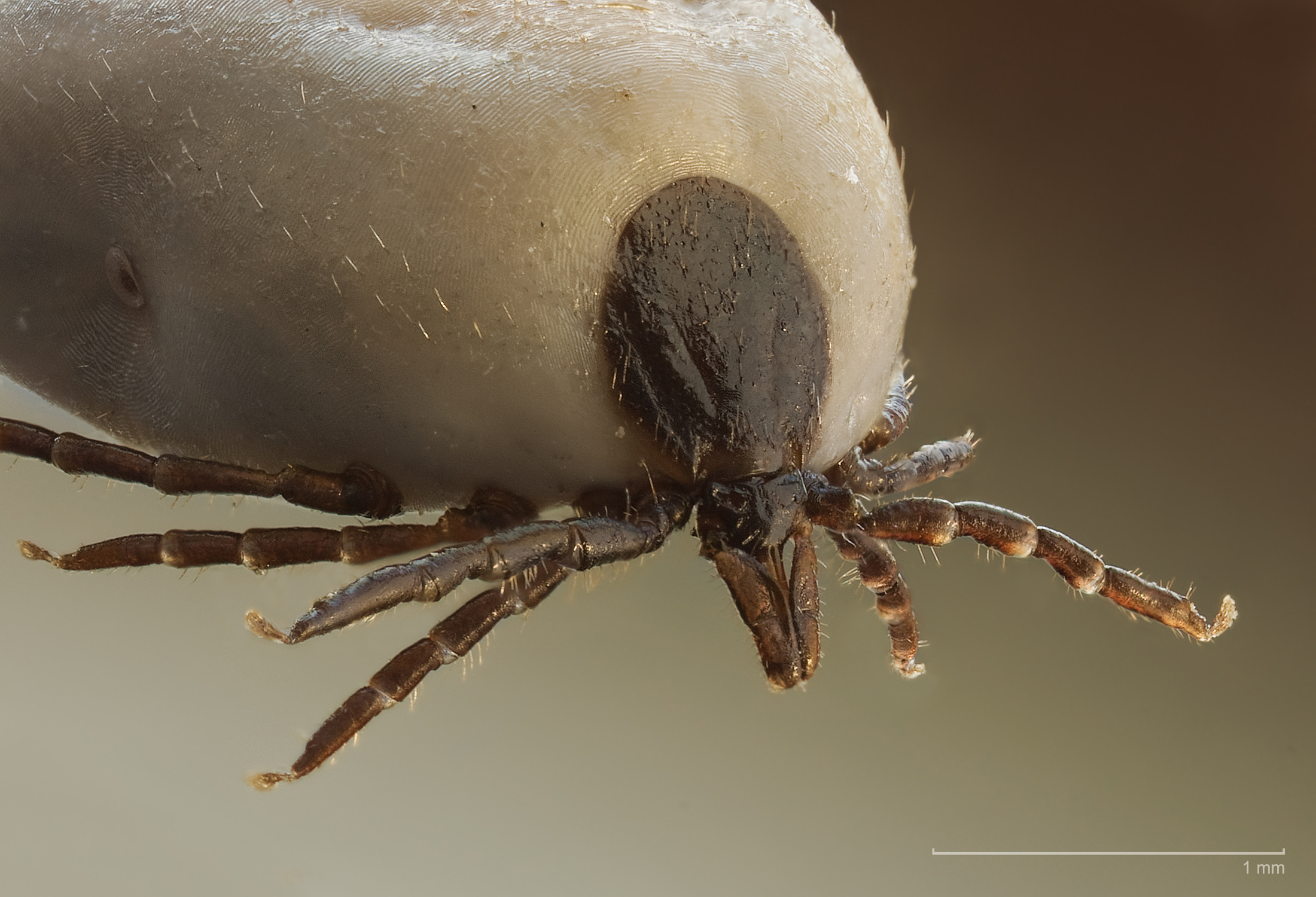|
Haemaphysalis Concinna
''Haemaphysalis concinna'' is a common rodent tick species that originally predominantly occurred in Russia and Eastern Europe, but is also known from Japan, China, Germany and France. It is known to act as a vector of tickborne disease. Description Females reach a length of three to four mm, but can grow up to ten mm when engorged; males are about three mm long. An unfed nymph is under two mm long. There are more males than females. Development All three stages target different hosts, the eggs are laid on the ground. They mate on their host around April. Feeding behavior Nymphs and larvae feed on small mammals such as rodents or hedgehogs, or on birds, reptiles, and humans. Adults prefer larger mammals, ranging from cats to horses, again including humans. Diseases ''H. concinna'' can act as a vector for ''Francisella tularensis'' (tularaemia), ''Rickettsia sibirica ''Rickettsia sibirica'' is a species of ''Rickettsia''. This bacterium is the etiologic agent of North ... [...More Info...] [...Related Items...] OR: [Wikipedia] [Google] [Baidu] |
Carl Ludwig Koch
Carl Ludwig Koch (21 September 1778 – 23 August 1857) was a German entomologist and arachnologist. He was responsible for classifying a great number of spiders, including the Brazilian whiteknee tarantula and common house spider. He was born in Kusel, Germany, and died in Nuremberg, Germany. Carl Ludwig Koch was an inspector of water and forests. His principal work ''Die Arachniden'' (1831–1848) (16 volumes) was commenced by Carl Wilhelm Hahn (1786–1836). Koch was responsible for the last 12 volumes. He also finished the chapter on spiders in ''Faunae insectorum germanicae initia oder Deutschlands Insecten'' lements of the insect fauna of Germanya work by Georg Wolfgang Franz Panzer (1755–1829). He also co-authored, with Georg Karl Berendt, an important monograph ''Die im Bernstein befindlichen Myriapoden, Arachniden und Apteren der Vorwelt'' (1854) on arachnids, myriapods, and wingless insects in amber based on material in Berendt's collection, now held in the Muse ... [...More Info...] [...Related Items...] OR: [Wikipedia] [Google] [Baidu] |
Tularaemia
Tularemia, also known as rabbit fever, is an infectious disease caused by the bacterium ''Francisella tularensis''. Symptoms may include fever, skin ulcers, and enlarged lymph nodes. Occasionally, a form that results in pneumonia or a throat infection may occur. The bacterium is typically spread by ticks, deer flies, or contact with infected animals. It may also be spread by drinking contaminated water or breathing in contaminated dust. It does not spread directly between people. Diagnosis is by blood tests or cultures of the infected site. Prevention is by using insect repellent, wearing long pants, rapidly removing ticks, and not disturbing dead animals. Treatment is typically with the antibiotic streptomycin. Gentamicin, doxycycline, or ciprofloxacin may also be used. Between the 1970s and 2015, around 200 cases were reported in the United States a year. Males are affected more often than females. It occurs most frequently in the young and the middle aged. In the United St ... [...More Info...] [...Related Items...] OR: [Wikipedia] [Google] [Baidu] |
Animals Described In 1844
Animals are multicellular, eukaryotic organisms in the biological kingdom Animalia. With few exceptions, animals consume organic material, breathe oxygen, are able to move, can reproduce sexually, and go through an ontogenetic stage in which their body consists of a hollow sphere of cells, the blastula, during embryonic development. Over 1.5 million living animal species have been described—of which around 1 million are insects—but it has been estimated there are over 7 million animal species in total. Animals range in length from to . They have complex interactions with each other and their environments, forming intricate food webs. The scientific study of animals is known as zoology. Most living animal species are in Bilateria, a clade whose members have a bilaterally symmetric body plan. The Bilateria include the protostomes, containing animals such as nematodes, arthropods, flatworms, annelids and molluscs, and the deuterostomes, containing the echinoderms and ... [...More Info...] [...Related Items...] OR: [Wikipedia] [Google] [Baidu] |
Ticks
Ticks (order Ixodida) are parasitic arachnids that are part of the mite superorder Parasitiformes. Adult ticks are approximately 3 to 5 mm in length depending on age, sex, species, and "fullness". Ticks are external parasites, living by feeding on the blood of mammals, birds, and sometimes reptiles and amphibians. The timing of the origin of ticks is uncertain, though the oldest known tick fossils are from the Cretaceous period, around 100 million years old. Ticks are widely distributed around the world, especially in warm, humid climates. Ticks belong to two major families, the Ixodidae or hard ticks, and the Argasidae, or soft ticks. ''Nuttalliella,'' a genus of tick from southern Africa is the only member of the family Nuttalliellidae, and represents the most primitive living lineage of ticks. Adults have ovoid/pear-shaped bodies (idiosomas) which become engorged with blood when they feed, and eight legs. Their cephalothorax and abdomen are completely fused. In additi ... [...More Info...] [...Related Items...] OR: [Wikipedia] [Google] [Baidu] |
Tick-borne Encephalitis
Tick-borne encephalitis (TBE) is a viral infectious disease involving the central nervous system. The disease most often manifests as meningitis, encephalitis or meningoencephalitis. Myelitis and spinal paralysis also occurs. In about one third of cases sequelae, predominantly cognitive dysfunction, persists for a year or more. The number of reported cases has been increasing in most countries. TBE is posing a concerning health challenge to Europe, as the number of reported human cases of TBE in all endemic regions of Europe have increased by almost 400% within the last three decades. The tick-borne encephalitis virus is known to infect a range of hosts including ruminants, birds, rodents, carnivores, horses, and humans. The disease can also be spread from animals to humans, with ruminants and dogs providing the principal source of infection for humans. [...More Info...] [...Related Items...] OR: [Wikipedia] [Google] [Baidu] |
RSSE
Tick-borne encephalitis (TBE) is a viral infectious disease involving the central nervous system. The disease most often manifests as meningitis, encephalitis or meningoencephalitis. Myelitis and spinal paralysis also occurs. In about one third of cases sequelae, predominantly cognitive dysfunction, persists for a year or more. The number of reported cases has been increasing in most countries. TBE is posing a concerning health challenge to Europe, as the number of reported human cases of TBE in all endemic regions of Europe have increased by almost 400% within the last three decades. The tick-borne encephalitis virus is known to infect a range of hosts including ruminants, birds, rodents, carnivores, horses, and humans. The disease can also be spread from animals to humans, with ruminants and dogs providing the principal source of infection for humans. [...More Info...] [...Related Items...] OR: [Wikipedia] [Google] [Baidu] |
Siberian Tick Typhus
North Asian tick typhus also known as Siberian tick typhus, is a condition characterized by a maculopapular rash. It is associated with '' Rickettsia sibirica''. See also * Flinders Island spotted fever * Queensland tick typhus Queensland tick typhus is a zoonotic disease caused by the bacterium ''Rickettsia australis''. It is transmitted by the ticks ''Ixodes holocyclus'' and '' Ixodes tasmani''. Signs and symptoms Queensland tick typhus is a tick-borne disease. Onse ... * List of cutaneous conditions References External links Bacterium-related cutaneous conditions Typhus Tick-borne diseases {{Dermatology-stub ... [...More Info...] [...Related Items...] OR: [Wikipedia] [Google] [Baidu] |
Rickettsia Sibirica
''Rickettsia sibirica'' is a species of ''Rickettsia''. This bacterium is the etiologic agent of North Asian tick typhus, which is also known as Siberian tick typhus. The ticks that transmit it are primarily various species of ''Dermacentor'' and ''Haemaphysalis ''Haemaphysalis'' is a genus of ticks, containing these species: *'' Haemaphysalis aborensis'' Warburton, 1913 *'' Haemaphysalis aciculifer'' Warburton, 1913 *'' Haemaphysalis aculeata'' Lavarra, 1904 *'' Haemaphysalis adleri'' Feldman-Muhsam, 1 ...''. References Rickettsiaceae {{Alphaproteobacteria-stub ... [...More Info...] [...Related Items...] OR: [Wikipedia] [Google] [Baidu] |
Francisella Tularensis
''Francisella tularensis'' is a pathogenic species of Gram-negative coccobacillus, an aerobic bacterium. It is nonspore-forming, nonmotile, and the causative agent of tularemia, the pneumonic form of which is often lethal without treatment. It is a fastidious, facultative intracellular bacterium, which requires cysteine for growth. Due to its low infectious dose, ease of spread by aerosol, and high virulence, ''F. tularensis'' is classified as a Tier 1 Select Agent by the U.S. government, along with other potential agents of bioterrorism such as ''Yersinia pestis, Bacillus anthracis'', and Ebola virus. When found in nature, ''Francisella tularensis'' can survive for several weeks at low temperatures in animal carcasses, soil, and water. In the laboratory, ''F. tularensis'' appears as small rods (0.2 by 0.2 µm), and is grown best at 35–37 °C. History This species was discovered in ground squirrels in Tulare County, California in 1911. ''Bacterium tularense'' was soon ... [...More Info...] [...Related Items...] OR: [Wikipedia] [Google] [Baidu] |
Rodent
Rodents (from Latin , 'to gnaw') are mammals of the order Rodentia (), which are characterized by a single pair of continuously growing incisors in each of the upper and lower jaws. About 40% of all mammal species are rodents. They are native to all major land masses except for New Zealand, Antarctica, and several oceanic islands, though they have subsequently been introduced to most of these land masses by human activity. Rodents are extremely diverse in their ecology and lifestyles and can be found in almost every terrestrial habitat, including human-made environments. Species can be arboreal, fossorial (burrowing), saltatorial/richochetal (leaping on their hind legs), or semiaquatic. However, all rodents share several morphological features, including having only a single upper and lower pair of ever-growing incisors. Well-known rodents include mice, rats, squirrels, prairie dogs, porcupines, beavers, guinea pigs, and hamsters. Rabbits, hares, and pikas, whose i ... [...More Info...] [...Related Items...] OR: [Wikipedia] [Google] [Baidu] |
Human
Humans (''Homo sapiens'') are the most abundant and widespread species of primate, characterized by bipedalism and exceptional cognitive skills due to a large and complex brain. This has enabled the development of advanced tools, culture, and language. Humans are highly social and tend to live in complex social structures composed of many cooperating and competing groups, from families and kinship networks to political states. Social interactions between humans have established a wide variety of values, social norms, and rituals, which bolster human society. Its intelligence and its desire to understand and influence the environment and to explain and manipulate phenomena have motivated humanity's development of science, philosophy, mythology, religion, and other fields of study. Although some scientists equate the term ''humans'' with all members of the genus ''Homo'', in common usage, it generally refers to ''Homo sapiens'', the only extant member. Anatomically moder ... [...More Info...] [...Related Items...] OR: [Wikipedia] [Google] [Baidu] |
Hedgehog
A hedgehog is a spiny mammal of the subfamily Erinaceinae, in the eulipotyphlan family Erinaceidae. There are seventeen species of hedgehog in five genera found throughout parts of Europe, Asia, and Africa, and in New Zealand by introduction. There are no hedgehogs native to Australia and no living species native to the Americas. However, the extinct genus ''Amphechinus'' was once present in North America. Hedgehogs share distant ancestry with shrews (family Soricidae), with gymnures possibly being the intermediate link, and they have changed little over the last fifteen million years. Like many of the first mammals, they have adapted to a nocturnal way of life. Their spiny protection resembles that of porcupines, which are rodents, and echidnas, a type of monotreme. Etymology The name ''hedgehog'' came into use around the year 1450, derived from the Middle English ''heyghoge'', from ''heyg'', ''hegge'' ("hedge"), because it frequents hedgerows, and ''hoge'', ''hogge'' ... [...More Info...] [...Related Items...] OR: [Wikipedia] [Google] [Baidu] |







